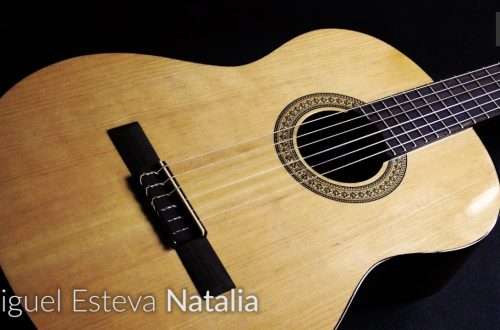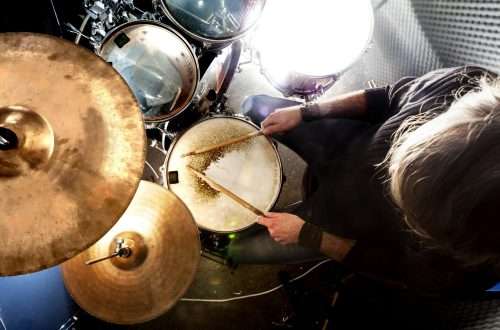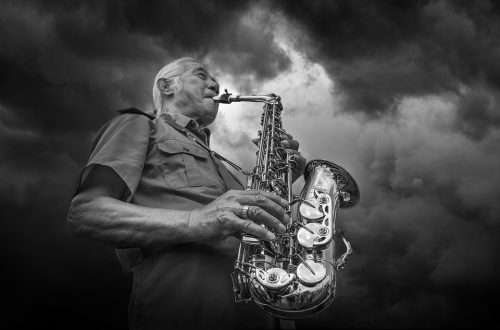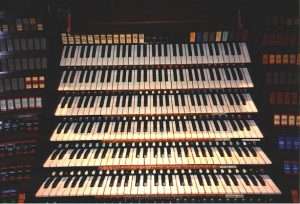
Organ (part 2): the structure of the instrument
When starting a story about the structure of an organ instrument, one should start with the most obvious.
Remote controller
An organ console refers to the controls that include all the numerous keys, shifters and pedals.
So to gaming devices includes manuals and pedals.
К timbre – register switches. In addition to them, the organ console consists of: dynamic switches – channels, a variety of foot switches and copula keys that transfer the registers of one manual to another.
Most organs are equipped with copulas for switching registers to the main manual. Also, with the help of special levers, the organist can switch between different combinations from the bank of register combinations.
In addition, a bench is installed in front of the console, on which the musician sits, and the organ switch is located next to it.
But first things first:
- Copula. A mechanism that can transfer registers from one manual to another manual, or to a pedalboard. This is relevant when you need to transfer the sound registers of weaker manuals to stronger ones, or bring the sound registers to the main manual. The copulas are turned on with special foot levers with latches or with the help of special buttons.
- Channel. This is a device with which you can adjust the volume of each individual manual. At the same time, the shutters of the blinds are regulated in the box through which the pipes of this particular manual pass.
- Memory bank of register combinations. Such a device is available only in electric organs, that is, in organs with an electric tracture. Here one would make an assumption that the organ with an electric tracture is somewhat related to the antediluvian synthesizers, but the wind organ itself is too ambiguous an instrument to easily make such an oversight.
- Ready register combinations. Unlike the register combination memory bank, which vaguely resembles the presets of modern digital sound processors, ready-made register combinations are organs with a pneumatic register tracture. But the essence is the same: they make it possible to use ready-made settings.
- Tutti. But this device includes manuals and all registers. Here is the switch.

Manual
Keyboard, in other words. But the organ has keys for playing with your feet – pedals, so it’s more correct to say the manual after all.
Usually there are two to four manuals in the organ, but sometimes there are specimens with one manual, and even such monsters that have as many as seven manuals. The name of the manual depends on the location of the pipes it controls. In addition, each manual is assigned its own set of registers.
В main The manual usually contains the loudest registers. It is also called Hauptwerk. It can be located both closest to the performer and in the second row.
- Oberwerk – a little quieter. Its pipes are located under the pipes of the main manual.
- Rückpositiv is a completely unique keyboard. She controls those pipes that are located separately from all the others. So, for example, if the organist sits facing the instrument, then they will be located behind.
- Hinterwerk – This manual controls the pipes that are located at the back of the organ.
- Brustwerk. But the pipes of this manual are located either directly above the console itself, or on both sides.
- solowerk. As the name suggests, the pipes of this manual are equipped with a large number of solo registers.
In addition, there may be other manuals, but those listed above are the most commonly used.
In the seventeenth century, the organs got a kind of volume control – a box through which pipes with shutters of blinds passed. The manual that controlled these pipes was called the Schwellwerk and was located at a higher level.
Pedals
Organs did not originally have pedalboards. It appeared around the sixteenth century. There is a version that it was invented by a Brabant organist named Louis van Walbeke.
Now there are a variety of pedal keyboards, depending on the design of the organ. There are both five and thirty-two pedals, there are organs without a pedal keyboard at all. They are called portable.
Usually the pedals control the bassiest pipes, for which a separate stave is written, under the double score, which is written for the manuals. Their range is two or even three octaves lower than the rest of the notes, so a large organ can have a range of nine and a half octaves.
Registers
The registers are a series of pipes of the same timbre, which are, in fact, a separate instrument. To switch registers, handles or switches (for organs with electric control) are provided, which are located on the organ console either above the manual or nearby, on the sides.
The essence of register control is as follows: if all registers are turned off, then the organ will not sound when a key is pressed.
The name of the register corresponds to the name of its largest pipe, and each handle belongs to its own register.
There is how labialAnd Reed registers. The first relate to the control of pipes without reeds, these are registers of open flutes, there are also registers of closed flutes, principals, registers of overtones, which, in fact, form the color of the sound (potions and aliquots). In them, each note has several weaker overtone overtones.
But reed registers, as can be seen from their very name, control pipes with reeds. They can be combined in sound with labial pipes.
The choice of register is provided in the musical staff, it is written above the place where this or that register should be applied. But the matter is complicated by the fact that at different times and even just in different countries, the registers of organs differed sharply from each other. Therefore, the registration of an organ part is rarely specified in detail. Usually only the manual, the size of the pipes and the presence or absence of reeds are accurately indicated. All other nuances of sound are given to the consideration of the performer.
Pipes
As you might expect, the sound of pipes is strictly dependent on their size. Moreover, the only pipes that sound exactly as it is written in the stave are eight-foot pipes. Smaller trumpets sound correspondingly higher, and larger ones sound lower than what is written in the stave.
The largest pipes, which are not found in all, but only in the largest organs in the world, are 64 feet in size. They sound three octaves lower than what is written in the musical staff. Therefore, when the organist uses the pedals while playing in this register, infrasound is already emitted.
To set up small labials (that is, those without a tongue), use a stimhorn. This is a rod, at one end of which there is a cone, and at the other – a cup, with the help of which the bell of the pipes of the organ is expanded or narrowed, thereby achieving a change in pitch.
But to change the pitch of large pipes, they usually cut out additional pieces of metal that bend like reeds and thus change the tone of the organ.
In addition, some pipes may be purely decorative. In this case, they are called “blind”. They do not sound, but have an exclusively aesthetic value.
Traktura wind organ
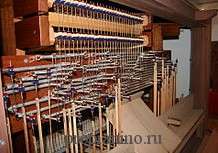
The piano also has a tractura. There, it is a mechanism for transferring the force of the impact of the fingers from the surface of the key directly to the string. In the organ, the tractura plays the same role and is the main mechanism for controlling the organ.
In addition to the fact that the organ has a tracture that controls the valves of the pipes (it is also called a playing tracture), it also has a register tracture, which allows you to turn entire registers on and off.
A potion is a group of registers that are currently in use. The game tracture does not use the pipes that are used with the help of the register tracture, so to speak, of course.
It is with the register tracture that the memory of the organ works, when entire groups of registers are switched on or off. In some ways, it resembles modern synthesizers. These can be both fixed combinations of registers, and free, that is, chosen by the musician in an arbitrary order.



